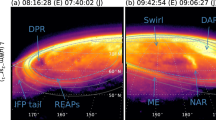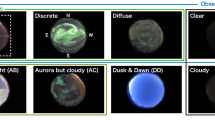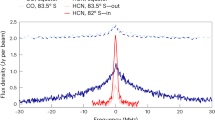Abstract
IN a recent communication1 conclusive evidence has been presented for the artificial production of auroral phenomena by the detonation of a nuclear device in the upper atmosphere. The auroral display in question was observed at Apia Observatory, lat. 13° S., long. 171° W., and is considered to have been produced by a nuclear bomb exploded approximately one hundred miles above Johnston Island, lat. 17° N., long. 169° W.
This is a preview of subscription content, access via your institution
Access options
Subscribe to this journal
Receive 51 print issues and online access
$199.00 per year
only $3.90 per issue
Buy this article
- Purchase on SpringerLink
- Instant access to full article PDF
Prices may be subject to local taxes which are calculated during checkout
Similar content being viewed by others
References
Cullington, A. L., Nature, 182, 1365 (1958).
Van Allen, J. A., Ludwig, G. H., Ray, E. C., and McIlwain, C. E., IGY Satellite Report No. 3, U.S. Nat. Acad. Sci. (1958).
Author information
Authors and Affiliations
Rights and permissions
About this article
Cite this article
FOWLER, P., WADDINGTON, C. An Artificial Aurora. Nature 182, 1728 (1958). https://doi.org/10.1038/1821728a0
Issue date:
DOI: https://doi.org/10.1038/1821728a0
This article is cited by
-
The Samoan Artificial Aurora
Nature (1959)
-
Geomagnetic and Ionospheric Phenomena associated with Nuclear Explosions
Nature (1959)
-
Postgraduate Training in the Public Health Aspects of Nuclear Energy
Nature (1959)
-
Magnetic Effects Resulting from Two High-Altitude Nuclear Explosions
Nature (1959)



